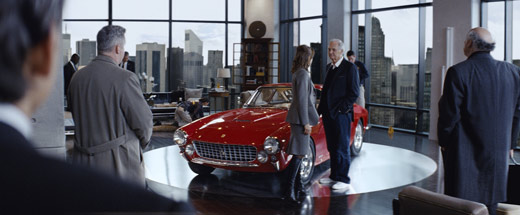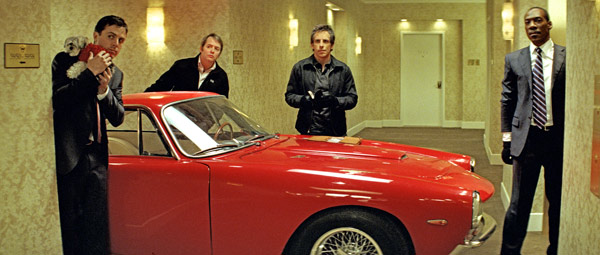
Mouseover film still above to compare to original live-action plate. Notice how certain elements in the lower half of the shoot have been brightened as the green screens have been replaced.
Both facilities share a projector that’s used for VFX reviews and DI work, and the material is passed through common servers. That meant Method VFX supervisor Greg Liegey could have progress on the film’s visual-effects work immediately evaluated by Sonnenfeld, who might make changes based on what he was seeing.
“As we developed the visual-effects shots, the filmmakers could review exactly what they would later see in the DI theater,” said Method’s executive VP Dan Glass in a prepared statement. “If there were questions about how a shot would look during the final grade, we consulted with Stefan, who was right there in the building. If Stefan wanted to see how a shot was evolving and possibly augment or modify his pre-grade, he did that as well.”

Mouseover film still above to compare to original live-action plate
As visual-effects shots took shape under the direction of Method’s visual effects supervisor Greg Liegey and his team, Sonnenfeld could immediately contribute his input about the color as well.
Keeping color and VFX on the same page saved time and avoided unpleasant surprises, Glass noted. For more on the new organization of Method Studios, see Film & Video’s recent interview with Glass.
For more information: www.company3.com; www.methodstudios.com.
Crafts: Post/Finishing
Sections: Business
Did you enjoy this article? Sign up to receive the StudioDaily Fix eletter containing the latest stories, including news, videos, interviews, reviews and more.










